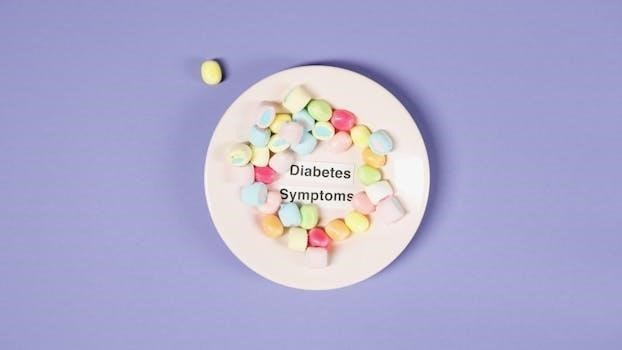Buc-ee’s Nutritional Information⁚ A Comprehensive Guide
Embark on a journey to discover the nutritional landscape of Buc-ee’s! This comprehensive guide unveils calorie counts, dietary information, and nutritional facts for a wide array of Buc-ee’s food offerings, empowering informed choices during your travel stops.
Understanding Buc-ee’s Food Options
Buc-ee’s, a Texas-based chain of travel centers, is renowned for its vast selection of food and snacks. From savory brisket sandwiches to sweet Beaver Nuggets and beyond, the options seem endless. Navigating this culinary landscape requires an understanding of the available choices.
Buc-ee’s offers a diverse menu, including breakfast items, sandwiches, jerky, pastries, and more. The sheer volume of choices can be overwhelming, but recognizing the different categories is essential for informed decision-making. Exploring the array of options allows travelers to discover a variety of flavors and tastes. It provides a unique experience beyond just a typical roadside stop.
Understanding the distinction between freshly prepared foods and packaged snacks is also vital. Fresh items, like the famous brisket, are made in-house and offer a different nutritional profile compared to pre-packaged snacks.
Consider your preferences and dietary needs to guide your food selections. Having a plan will help you better navigate the multitude of tempting treats and meals that Buc-ee’s has available.
Finding Nutritional Information for Buc-ee’s Products
Locating nutritional information for Buc-ee’s products can be a key step towards making informed dietary choices while on the road; While Buc-ee’s doesn’t always provide readily available nutritional information in a centralized location, there are several strategies to employ.
Firstly, always check the packaging. Many pre-packaged snacks and food items at Buc-ee’s will have standard nutrition labels, detailing serving size, calories, macronutrients (fat, carbohydrates, protein), and micronutrients.
For freshly prepared items, such as sandwiches or salads, the process can be more challenging. Direct inquiries to Buc-ee’s staff might yield some information, although consistency may vary. Online resources, like comprehensive food databases and nutrition tracking websites, may contain user-submitted information on Buc-ee’s products. However, verifying the accuracy of this user-generated content is crucial. Searching the web using specific product names will sometimes provide useful information, but always be cautious of unofficial sources.
Remember that nutritional content can vary based on portion sizes and preparation methods, making it essential to consider all available information.
Popular Buc-ee’s Menu Items and Their Nutritional Content
Buc-ee’s boasts an impressive array of food options, from savory snacks to hearty meals. Understanding the nutritional content of popular menu items is essential for health-conscious travelers. Let’s explore some favorites and their approximate nutritional profiles.

Beaver Nuggets⁚ These sweet, puffed corn snacks are a Buc-ee’s signature. A serving (approximately 2/3 cup) contains around 209 calories, with a high carbohydrate content (36g), moderate fat (6.7g), and minimal protein.
Beef Jerky⁚ A protein-packed choice, Buc-ee’s beef jerky varies in nutritional value depending on the flavor and cut. Generally, one ounce contains 80-120 calories, 9-12 grams of protein, 1-3 grams of fat, and a significant amount of sodium (500-600mg).
Brisket Sandwich⁚ This savory option offers a mix of protein and carbohydrates. Calorie counts can vary widely based on portion size and toppings, but a typical sandwich may contain 500-800 calories, with a substantial amount of fat and sodium.

Cobb Salad⁚ While offering vegetables, eggs and meat, a package contains 425 calories.
Remember that these are estimates, and actual nutritional content may vary. Always check packaging labels when available.
Breakfast Menu Nutrition
Start your day right with Buc-ee’s breakfast options, but be mindful of their nutritional content. While convenient, some choices can be high in calories, fat, and sodium. Let’s examine some common breakfast items and their nutritional information to help you make informed decisions.

Breakfast Tacos⁚ A popular choice, breakfast tacos can vary significantly in their nutritional profiles depending on the fillings. A typical taco with eggs, cheese, and sausage or bacon can easily contain 300-500 calories, with a considerable amount of fat and sodium. Opting for leaner protein sources like beans or grilled chicken can help reduce the fat content.
Breakfast Sandwiches⁚ Similar to tacos, breakfast sandwiches can be calorie-dense. Bread, cheese, and processed meats contribute to a higher calorie and fat count. Consider choosing whole-wheat bread and leaner protein options to make a healthier choice.
Pastries and Donuts⁚ These sweet treats are tempting but are often high in sugar, calories, and unhealthy fats. Indulge in moderation or choose fruit for a more nutritious morning snack.
Coffee Drinks⁚ Be mindful of added sugars and creamers in coffee drinks, as they can significantly increase the calorie count; Opt for black coffee or unsweetened alternatives to keep your calorie intake in check. Always check with your local Buc-ees to see what specials are currently being offered.
Beef Jerky Nutrition
Buc-ee’s is renowned for its wide variety of beef jerky, a popular snack for travelers. While jerky offers a convenient source of protein, it’s essential to be aware of its nutritional content, particularly sodium levels.
Typically, Buc-ee’s beef jerky contains around 80-120 calories per ounce. The protein content is substantial, ranging from 9-12 grams per ounce, making it a satisfying snack. However, the fat content can vary depending on the flavor and cut of beef used, generally falling between 1-3 grams per ounce;
The most significant concern with beef jerky is its high sodium content. An ounce of Buc-ee’s beef jerky can contain 500-600 milligrams of sodium. This high sodium level is due to the curing and preservation process. For individuals watching their sodium intake, it’s crucial to consume beef jerky in moderation or seek out lower-sodium alternatives, if available.
Different flavors of jerky may also have varying sugar contents. Some varieties may include added sugars for flavor enhancement, so it’s always a good idea to check the nutritional label. Remember, while beef jerky can be a protein-rich snack, its high sodium content warrants mindful consumption.
Beaver Nuggets Nutrition

Buc-ee’s Beaver Nuggets are a signature sweet treat, but it’s wise to understand their nutritional profile before indulging. These caramel-coated corn puffs are undeniably delicious, but they are also high in carbohydrates and sugar.
A single cup of Beaver Nuggets contains approximately 209 calories. The majority of these calories come from carbohydrates, with around 36 grams per cup. There is also a notable amount of fat, about 6.7 grams per cup. Protein content, however, is minimal.
Buc-ee’s also offers Sea Salt Caramel Beaver Nuggets. A 0.67 cup serving contains 130 calories, 24 grams of total carbohydrates, 4 grams of fat, and 0 grams of protein. These nuggets are primarily a source of simple sugars, which can lead to a rapid spike in blood sugar levels.
Due to their high sugar and carbohydrate content, Beaver Nuggets should be considered an occasional treat rather than a regular snack, especially for individuals managing diabetes or watching their weight. While they offer a satisfying sugary crunch, moderation is key to maintaining a balanced diet. Be mindful of portion sizes to enjoy this Buc-ee’s favorite responsibly.
Cobb Salad Nutrition
Buc-ee’s offers a Cobb Salad as a potentially more nutritious option compared to some of their other offerings. Understanding the nutritional content of this salad is crucial for making informed dietary choices while on the road. A packaged Cobb Salad from Buc-ee’s contains approximately 425 calories. This calorie count can vary depending on the specific ingredients and portion sizes.
The Cobb Salad typically includes a mix of lettuce, grilled chicken or turkey, bacon, hard-boiled eggs, avocado, tomatoes, and cheese. These ingredients contribute varying amounts of protein, fats, and carbohydrates.
While specific macronutrient breakdowns (protein, fat, carbohydrates) aren’t readily available, it’s safe to assume that the salad provides a decent amount of protein from the chicken and eggs, as well as healthy fats from the avocado. The bacon and cheese will contribute to the fat content, and the vegetables will offer some carbohydrates and fiber.
However, it’s important to be mindful of the dressing used on the Cobb Salad, as dressings can significantly increase the calorie, fat, and sodium content. Opting for a light vinaigrette or using only a portion of the provided dressing can help to reduce the overall calorie and fat intake. Overall, the Cobb Salad at Buc-ee’s can be a reasonable choice when seeking a more balanced meal option.
Healthy Eating Options at Buc-ee’s
While Buc-ee’s is known for its tempting array of snacks and treats, it’s still possible to find healthier eating options amidst the indulgence. Making smart choices can help you maintain a balanced diet even on a road trip.
Look for fresh fruit cups or whole fruits like bananas and apples, which provide essential vitamins and fiber. Opt for salads, such as the Cobb Salad, but be mindful of the dressing and portion sizes. Choose lean protein sources like grilled chicken or turkey sandwiches, and load up on vegetables whenever possible.
Consider smaller portions of your favorite treats to satisfy cravings without overindulging; For example, instead of a large bag of Beaver Nuggets, choose a small sample size. Pay attention to the nutritional information on packaging to make informed decisions. Look for items with lower sodium, sugar, and saturated fat content.
Avoid sugary drinks and opt for water, unsweetened tea, or diet soda. Pack your own healthy snacks, such as nuts, seeds, or protein bars, to avoid relying solely on Buc-ee’s offerings. By making conscious choices and planning ahead, you can navigate Buc-ee’s and still maintain a relatively healthy diet.
Checking Labels for Nutritional Information
A crucial step in making informed food choices at Buc-ee’s, or anywhere else, is to carefully examine the nutritional information labels on packaged products. These labels provide a wealth of data that can help you understand the nutritional content of the food you’re considering.
Pay close attention to the serving size listed on the label, as all the subsequent nutritional information is based on that specific amount. Check the total calories per serving to get an idea of the energy content. Examine the amounts of fat, saturated fat, trans fat, cholesterol, and sodium, as these are important factors for heart health.
Also, be aware of the carbohydrate content, including total carbohydrates, dietary fiber, and sugars. Fiber is beneficial for digestion and can help you feel full, while limiting added sugars is generally recommended. Protein is essential for building and repairing tissues, so check the protein content as well.
Finally, look at the list of ingredients to identify any potential allergens or ingredients you may want to avoid. By carefully reading and understanding nutritional information labels, you can make more informed decisions about the foods you choose at Buc-ee’s and better manage your overall dietary intake.
The Importance of Sodium Content in Buc-ee’s Snacks
When navigating the tempting snack aisles of Buc-ee’s, it’s crucial to be mindful of the sodium content in the various offerings. Sodium, a key component of salt, plays a vital role in bodily functions, but excessive intake can pose health risks. Many processed snacks, including those found at Buc-ee’s, often contain high levels of sodium;
Consuming too much sodium can lead to increased blood pressure, elevating the risk of heart disease, stroke, and kidney problems. It’s particularly important for individuals with hypertension or other related conditions to monitor their sodium intake closely.
Be sure to check the nutritional labels on Buc-ee’s snacks and pay attention to the milligrams of sodium per serving. Opt for lower-sodium alternatives when available, such as unsalted nuts, fresh fruits, or vegetables.
Also, consider portion sizes, as consuming multiple servings of a high-sodium snack can quickly add up. By being aware of the sodium content in Buc-ee’s snacks and making informed choices, you can enjoy your travel treats while protecting your health. Choosing wisely helps to maintain a balanced diet even on the road.
Buc-ee’s⁚ More Than Just a Travel Center
Buc-ee’s transcends the typical notion of a travel center, evolving into a destination in itself. Beyond clean restrooms and numerous fueling positions, it offers a unique experience that captures the hearts of travelers. The sheer scale of Buc-ee’s stores is impressive, boasting an expansive selection of snacks, meals, and merchandise.
The food options at Buc-ee’s are a major draw, ranging from the famous Beaver Nuggets to savory brisket sandwiches and homemade fudge. This vast array of choices caters to diverse tastes and preferences, making it easy to find something to satisfy any craving.
Buc-ee’s also stands out for its commitment to customer service. Friendly staff and a well-maintained environment contribute to a positive and welcoming atmosphere. Many people even compare a visit to Buc-ee’s to going to Disneyland, highlighting the sense of excitement and enjoyment it provides.
Moreover, Buc-ee’s has become a cultural phenomenon, with its iconic beaver mascot and widespread popularity. It’s a place where people can stop, relax, and indulge in a bit of Texas hospitality. Buc-ee’s isn’t just a stop on the road, it’s a memorable part of the journey.

No Responses